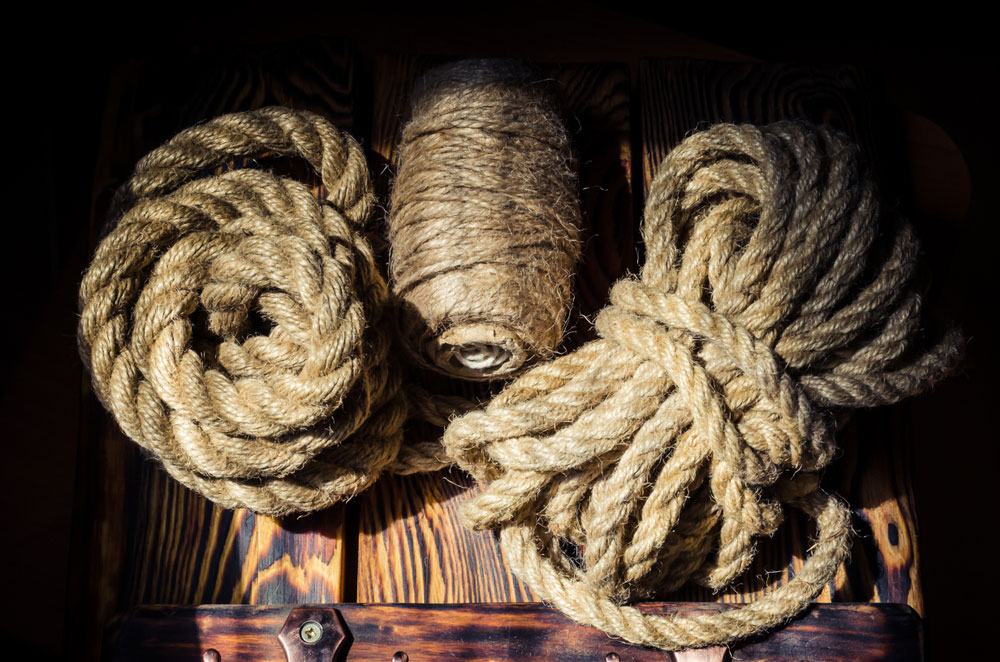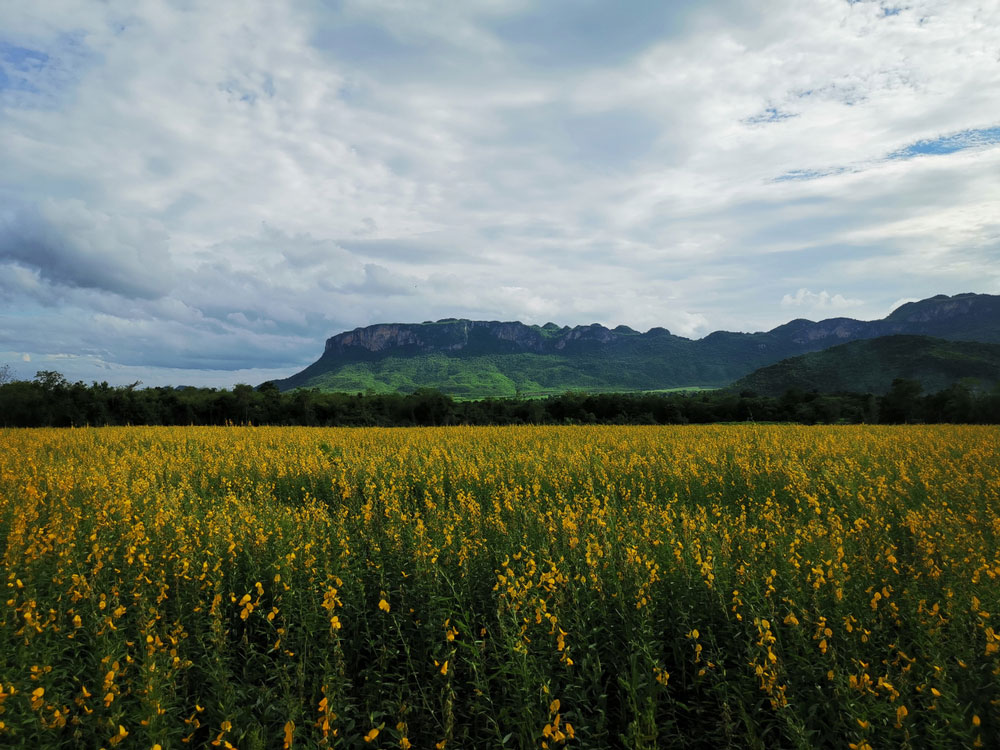Hemp has been exploding in the agricultural industry, showing promise for many growers and harvesters. However, hemp can sometimes be a confusing concept for those not familiar with the specialized production. Before we tackle the various types of hemp, it is helpful to understand what hemp is and what goes into the cultivation of this plant.
What Is Hemp?
Hemp is a deciduous plant and is a variety of the cannabis Sativa plant. A deciduous plant has both male and female parts. Many of those who are uneducated about the plant considers hemp to be the same plant as the marijuana plant. However, these two plants are different varieties. Hemp plants are bred primarily for CBD content, while marijuana plants are bred primarily for THC content. The CBD market has grown in recent years and many sources are selected based on their terpene or aromatic profiles.
The entirety of a hemp plant can be utilized to make different products. The hemp plant can be divided up into four different categories. These categories are the hemp fibers, stalks, leaves and flowers, and seeds. Products that are hemp-derived cannot legally contain more than .3% THC. Products range from lotions and oils to foods that can be found in typical shopping areas.
Growers and harvesters of hemp are required to obtain licenses specific to hemp. Hemp has been legalized by the federal government, as part of the 2018 Farm Bill. However, industrial hemp production is regulated at the state level. Even though industrial hemp is legal at the federal level, states may heavily regulate and restrict hemp production.
How Does the Hemp Plant Differ From the Marijuana Plant?
Hemp and marijuana plants are both varieties of the cannabis plant. That being said, there are stark differences between the two plants. While there are some clear distinctions in their appearances, there are other differences that are more prominent. These variations mainly are in their chemical makeup, which also affects the laws and regulations surrounding the plants.
The cannabis plant species known as the marijuana plant is typically bred for its THC content. THC is an active cannabinoid that produces psychoactive effects. Marijuana plants are generally plants that are bred to contain more than .3% THC. However, this can prove confusing, as marijuana plants used to be commonly referred to as just “cannabis” plants. However, marijuana is actually a breed of the cannabis plant.
While marijuana plants may contain levels of CBD, hemp plants are typically bred to contain high quantities of CBD and low amounts of THC. In order for a plant to be considered hemp, the plant needs to contain less than .3% THC. Hemp was previously considered an illegal substance, due to various reasons. One of the reasons may have stemmed from the similar appearance of hemp flower buds and marijuana buds.
However, the 2018 Farm Bill federally legalized industrial hemp and hemp-derived products, so long as they do not contain more than .3% THC. Marijuana is still considered a controlled substance under the Controlled Substance Act.
Marijuana and hemp plants require different environments when it comes to growing and harvesting the plant. However, both plants require specialized cultivation. Changes in the environment can hinder the production process and yield poor results. Marijuana plants are typically bred to produce female plants, which produce flower buds. Hemp plants are grown indoors or outdoors to maximize yield once the breed’s characteristics are determined.
The uses for hemp and marijuana also differ. Marijuana is bred for its high THC content. THC is a mind-altering active compound found in the marijuana plant. Individuals report euphoric effects due to the psychoactive nature of this compound.
While marijuana can be consumed or smoked, it remains heavily regulated and illegal in many states. On the other hand, hemp is harvested to produce many different products. These range from clothing to food products.
Is There a Difference Between Hemp-Derived CBD and Marijuana-Derived CBD?
A common misconception of the passing of the 2018 Farm Bill that made hemp federally legal is that marijuana-derived CBD is now legal, as well. Although CBD may be the same at the molecular level, whether it is derived from hemp or marijuana, marijuana-derived CBD is not considered legal.
This is because hemp-derived CBD comes from plants that are regulated to contain no more than .3% THC. The 2018 Farm Bill directly applies to hemp products and products derived from hemp. The Bill does not cover marijuana-derived CBD and, therefore, it is considered a controlled substance.
Does CBD Show up in Hair Follicles?
In most cases during drug tests, amounts of THC can be revealed within hair follicles. CBD, however, will not show up on hair follicle or other drug tests, as companies do not typically test for CBD. However, if a product contains THC, it may result in a positive drug test.
History of Hemp
It is believed that hemp originates from the Himalayas in Asia. Knowledge surrounding the history of hemp is limited, as it is not known who the first people were to begin cultivating the plant. However, it is suspected that cultivation began around 10,000 years ago in Asia. Hemp was utilized in many different ways, often being considered a gift from the gods and used by different tribes to make clothing, ropes, and footwear, among other products.
In today’s age, hemp has grown in popularity and is seen as a profitable agricultural product. While industrial hemp is federally legal, there are still state regulations and laws that can strictly limit the production of hemp. However, progressive steps have been taken by some states.
How Is Hemp Harvested?
The cultivation and harvest of hemp is often a specific and meticulous process, requiring specific environments to yield the best crop. The harvesting process plays a key role in CBD production. Careful monitoring, as well as tests, can maintain the quality of a hemp crop. Crops may be susceptible to mold, mildew, and pests. Growers need to adjust testing processes, as well as take into account the environment they are growing in, to yield the best results.
Once the hemp plant is harvested, it needs to be dried out. The hemp biomass needs to be stored inside a building in a well-ventilated area. While hemp is drying, it should not be exposed to direct sunlight. The temperature should be around 60-70° Fahrenheit. Humidity in the building where the hemp dries should remain around 60%. Keeping conditions optimal produces a higher-quality product.
How Is Hemp Dried Out?
There are many different ways that a farmer can dry out hemp. A farmer may use rafters in a bar that is open to allow airflow. Other methods require a sterilized lab facility. The most important factors to properly dry out hemp are the conditions and space.
The faster the moisture is removed from the product, the better. This prevents contaminants from affecting the crop and allows for a high-quality product. Hemp plants are typically hung by clamps or wires to allow airflow to dry them out. This typically takes anywhere from three to five days, but some plants may need longer.
What Is CBD Flower?
The industrial types of hemp plant produces flower buds, referred to as CBD flowers. This is because the flowers are typically harvested and processed to extract CBD or cannabidiol. While in the flower bud, CBD oil has not been processed or extracted. The industrial hemp flower mud is harvested from the plant and dried. Then, it is packaged to be sold.
CBD flower is the flower bud from the industrial hemp plant. This means that it is low in THC and higher in CBD. The hemp plant needs to legally contain less than .3% THC to be considered hemp. CBD flowers are typically smoked or vaped. The flower may be rounded up and packed into a bowl or used in a joint. However, CBD flower buds can also be used in baking and cooking.
The Many Uses and Types of Hemp
The hemp plant is incredibly versatile—every part of the hemp plant can be utilized in some way. The hemp plant is used in cosmetics, as well as food products. Although hemp is federally legal in the United States, certain states have restrictions on some products.
Hemp in Cosmetics
In cosmetics, hemp is growing increasingly popular. The type of hemp-infused into most cosmetic products is hemp seed oil. Hemp seed oil does not typically contain CBD, but may contain many other cannabinoids. That being said, CBD extract may also be infused into cosmetic products. These products can include:
- Moisturizers
- Creams
- Soaps
- Shampoos
- Deodorants
Hemp in the Food Industry
One of the first known ways hemp was used was as a food source. Hemp was often a staple of the diet of the economically-challenged, as well as food for livestock. Later on, hemp was regarded as a food supplement by every class. Today, different parts of the hemp plant can be used in foods and consumed.
Hemp Seed Oil
Hemp seed oil is derived from the hemp plant. In order to produce hemp seed oil, the hemp seeds are cold-pressed. These hemp seeds contain fatty acids, as well as vitamins and minerals. Different types of hemp seed oil may be infused into many products, including:
- Salad dressings
- Pesto sauce
- Shakes
It is not recommended to cook with hemp seed oil, as it is not intended to be exposed to high temperatures.
Hemp Seeds
Hemp seeds may be available in the shells or can be sold unshelled. You may find hemp seeds at a grocery store or in a restaurant. The seeds are rich in fatty acids, as well as proteins. Hemp seeds are typically added to other foods and dishes. These can include:
- Salads
- Smoothies
- Deserts
- Protein bars
Hemp Protein Powder
When hemp seeds are cold-pressed to create various types of hemp seed oil, a byproduct is created. This is known as hemp seed cake. Hemp seed cake contains protein, as well as vitamins and minerals. When hemp seed cake is processed, hemp flour can be made. Larger particles are then sifted from the flour. The finer powder created from this process is referred to as hemp protein powder.
Hemp Tea
Hemp tea can be prepared from different parts of the hemp plant. While tea can be made from the roots of the plant, these do not contain any cannabinoids. Tea can be made from young or mature hemp plants. Mature hemp plant tea is made from the flowers and leaves of the plant.
Hemp as a Biofuel
Fossil fuel depletion is our new reality. As researchers predict crude oil reserves are running out, many are looking for new solutions. A team of researchers at the University of Connecticut conducted tests on industrial hemp plant seeds. They found that these seeds can be used to create diesel fuel. Hemp biodiesel can be made from hemp seeds and can be used in diesel engines. The remainder of the plant can also be used to produce ethanol.
Hemp Textiles
As in the past, when hemp was used throughout Asia and the Middle East to create paper, rope, and shoes, industrial hemp is being used similarly today. Hemp fibers are considered some of the strongest and most durable textile fibers. Hemp also has less stretch than many other fibers. Hemp fabric is used for clothing, as well as other products.
What Is the Future of Hemp?
The cultivation and harvest of hemp is an increasingly popular agricultural industry that is proving to be in demand among consumers. Farmers are taking advantage of this skyrocket in demand by providing their supply of industrial hemp. Although ensuring a quality hemp product can be meticulous, producing a high-quality end product is of the utmost importance. While some states still impose some restrictions against hemp and hemp products, the attitude towards hemp cultivation is shifting with more representatives becoming informed. The industry is expected to grow immensely in the coming years, and hemp is often considered the crop of the future.
Find a Quality Source
Whether you want to purchase smokable hemp flower products or purchase wholesale in bulk, you want to research potential companies. You want to find a company that is properly certified, holds the required licenses, and stands behind their products. This ensures that you receive a quality product. The team at CBDFlowerUSA strives to provide customers with the highest-quality product on the market, which means they are always improving their products. Pre-packaged options, as well as wholesale options, are available.
Visit our blog to find out more about hemp cigarettes.




Recent Comments